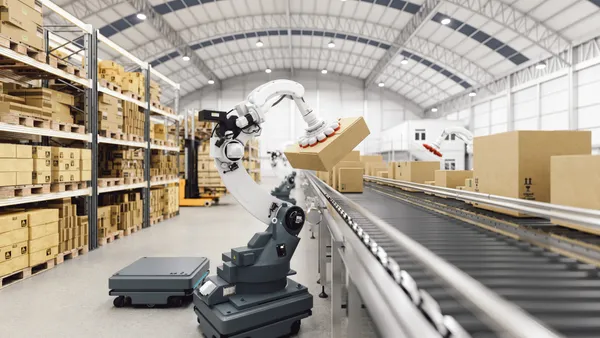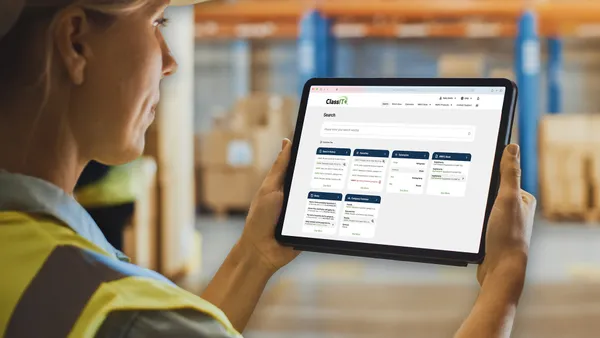As global supply chains become increasingly intertwined and interdependent, organizations need robust, unified technology platforms that deliver high levels of visibility, erase blind spots and bridge data silos.
Offshoring gained significant momentum in the 1960s, with many companies establishing production lines in China and other Asian manufacturing hubs to leverage lower labor and procurement costs. While this strategy initially offered economic advantages, especially in the early 2000s, it also created complex, sometimes fragile, supply chains highly dependent on geographically distant partners.
In the late 2010s, due to geopolitical tensions, East-West trade wars and changing climate initiatives, the supply chain sector dealt with tariff changes, a rash of new trade regulations and a drive for domestic manufacturing that suddenly made the onshoring and reshoring of production and sourcing more attractive to stakeholders. However, in a textbook case of “hindsight is 20/20,” companies found that, after years of outsourcing purely to benefit the bottom line, it would be nearly impossible to reposition their over-dependent supply chains. As a result, many opted to stay the course and maintain their strained global partnerships.
According to a SAP-sponsored research study with IDC, approximately 87% of supply chain executives say that a substantial portion of their operations are outsourced — up from just 10–20% in 2000. By the numbers, it’s clear that the center of knowledge, information, data and operations has effectively moved upstream and further away from the core brand-owning company. This not only inhibits visibility but also interferes with compliance, transparency and control.
The COVID-19 pandemic put an even bigger spotlight on supplier connectivity and visibility. It exposed the fact that many companies had pushed to outsource a large portion of their operations, revealing an “out of sight, out of mind” mentality within the supply chain management sector. For organizations that went down that path, key stakeholders now need a solution to combat the lack of a comprehensive understanding of their supply chain operations with little or no visibility into what’s happening upstream.
Tech enables the connected supply chain
Visibility plays a crucial role in modern connected supply chains, where companies are interdependent and reliant on one another to move goods across borders in a cost-effective and efficient manner. Managing the hundreds or even thousands of stakeholders participating in this operation requires a unified platform that provides multi-tier visibility and collaboration across all business partners — not just the Tier 1 suppliers.
When integrated into existing operations, these platforms provide stakeholders with peace of mind through the provision of real-time track-and-trace across every component of the supply chain, from provenance to final stop. Warehouse managers know they have the inventory they need to fulfill orders; logistics managers and procurement teams can readily track shipments across global routes; and ESG managers can implement and then track their companies’ ethical sourcing practices.
For example, Richemont International SA owns 27 luxury brands and more than 2,300 stores. The company works with more than 700 direct spend suppliers to procure everything from materials to manufacturing services. The company’s legacy systems, which depended on manual, e-mail-based workflows and an outdated supplier collaboration system, made it difficult to organize and connect with suppliers and lacked sufficient supply chain-wide insight to optimize operations across disparate silos.
Richemont’s goal was to improve supplier collaboration by making the production process, including warehouse management, more efficient both internally and for external partners. From a performance perspective, this would require accelerating workflows, improving data quality and reliability and simplifying the procure-to-pay process.
Richemont chose to digitally transform its external manufacturing supply chain using SAP Business Network and SAP Business Network for Supply Chain. The initial pilot was to enable digital procurement for six of Richemont’s brands, covering 10 direct suppliers and 100 different supply chain processes across procurement, outsourced manufacturing, external processing and returns.
“Before, we had no supply chain visibility,” said Mirjana Maillard, procurement product owner. “With SAP Business Network for Supply Chain, it’s like day and night. We have insight into supply chain operations, suppliers are happier and we have more time for value-adding tasks.”
As the rollout continues, Richemont’s ultimate goal is to onboard all new suppliers, including 30 integrated suppliers. Gaining the insight to ensure sustainable and ethical global procurement, Richemont now has nearly 460 direct supplier users on SAP Business Network, with plans to add more as part of its continuous process.
Removing the barriers to entry
Global organizations like Richemont have come to realize that faster problem-solving, better inventory management, lower costs, more sustainable practices and happier customers are all within reach in the connected, tech-enabled supply chain. Advanced B2B collaboration platforms also remove the barriers to entry for companies that want to grow, enter new markets and onboard new suppliers as quickly as possible.
“I meet with three to five different companies per week, and the need to gain better insights into their supplier/partner ecosystem activity invariably comes up during every conversation,” said Corey Hughes, Network Executive for Supply Chain at SAP Business Network. “Companies want to know how they can streamline their many global trading partner relationships and gain better visibility into their upstream supply chains.”
With connected supply chain platforms in their corners, organizations can also reduce the friction, time and effort required to onboard new business partners and ensure everyone is working from the same playbook. This helps to speed up time to market, minimize frustrations and improve customer service levels — all of which contribute positively to the company’s bottom line.
To learn more about how your organization can build a more connected supply chain with SAP Business Network, visit www.sap.com.










